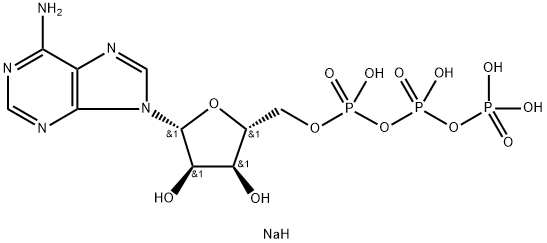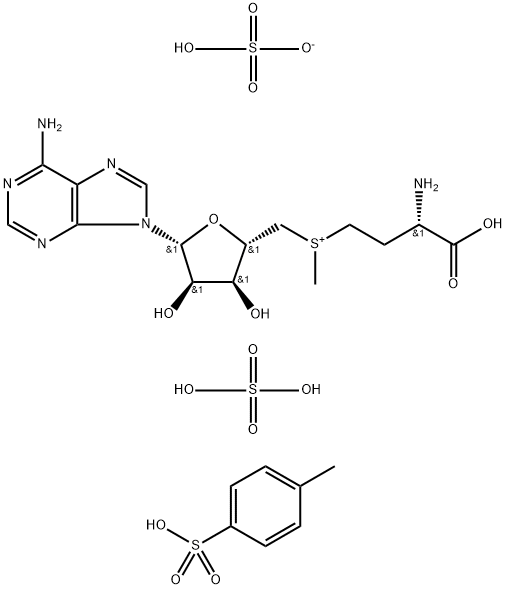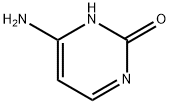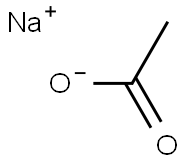Citicoline sodium
Synonym(s):CDP-choline-Na;CDP-coline;Citicoline sodium;P′-[2-(Trimethylammonio)-ethyl]-ester cytidine 5′-(tri-hydro-gen di-phos-phate) inner salt monosodium
- CAS NO.:33818-15-4
- Empirical Formula: C14H26N4O11P2.Na
- Molecular Weight: 511.31
- MDL number: MFCD00037486
- EINECS: 251-689-1
- SAFETY DATA SHEET (SDS)
- Update Date: 2025-11-04 14:54:54

What is Citicoline sodium?
Chemical properties
White Solid
Description
Cytidine 5′-diphosphocholine, Sodium Salt (CDP-choline) is a PLA2 inhibitor and acetylcholine receptor inducer.
Chemical properties
White to off-white solid, odorless or faint characteristic odor.
The Uses of Citicoline sodium
Naturally occurring nucleotide; intermediate in the major pathway of lecitin biosynthesis. Neuroprotective. It is used in the treatment of ischemic stroke and head trauma.
The Uses of Citicoline sodium
Cytidine 5′-diphosphate (CDP) is used as a substrate of CDP (nucleoside diphosphate) kinase (2.7.4.6) to produce CTP in support ofDNA and RNA biosynthesis and of ribonucleotide reductase to product dCMP.
The Uses of Citicoline sodium
Cytidine-5'-diphosphocholine sodium salt hydrate acts as a neuroprotective agent in situations of hypoxia and ischemia. It is used as biosynthetic intermediate of membrane phospholipids. It is a cerebral vasodilator and inhibits PLA2 activation.
What are the applications of Application
Citicoline (CDP-choline) is an essential intermediate in the synthesis of the major phospholipid of the cell membranes, phosphatidylcholine (PtdCho). It increases plasma adrenocorticotropic hormone (ACTH) levels and potentiates serum thyrotrophin (TSH) levels by activating the central cholinergic system.
Citicoline Sodium is used to treat age-related memory loss, cerebrovascular diseases such as stroke, dementia, as well as head trauma. Research has shown that it increases a chemical called phosphatidylcholine which is important for brain function. Citicoline might also decrease brain tissue damage when the brain is injured. Citicoline Sodium is also said to help with weight management when used as a dietary supplement.
brand name
CerAxon (Interneuron).
Biological Activity
Citicoline sodium (CDP-choline) is an endogenous intermediate in the synthesis of phosphatidylcholine. It also serves as a choline donor in the biosynthesis of the neurotransmitter acetylcholine. Citicoline sodium demonstrates protective effects in cerebral ischemia, traumatic brain injury, and memory disorders.
General Description
Cytidine 5′-diphosphocholine (CDP-choline) contains cytidine and choline linked via a diphosphate bridge.
Biochem/physiol Actions
Cytidine 5′-diphosphocholine (CDP-choline) plays an important role in the synthesis of phosphatidylcholine. It is also involved in the biosynthesis of acetylcholine, a neurotransmitter. CDP-choline has therapeutic effects against hypoxia, cerebral ischemia and traumatic brain injury. It also exhibits therapeutic effects against learning and memory disorders, drug addiction and Alzheimer′s and Parkinson′s diseases.
Side Effects
Citicoline sodium may be safe for 12 weeks of oral use, side effects may include stomach pain, back pain, blurred vision, constipation and headache. While Citicoline 2% Eye Drops may be safe for long-term use (up to 3 years). No serious side effects have been reported by clinical investigators in the treatment of Parkinson's disease.
Safety
There are two forms of citicoline: citicoline sodium and citicoline free-base. Citicoline sodium is the form that is approved as a prescription medication in some European countries and throughout Asia. Citicoline free-base is the form that is available as a dietary supplement and food/beverage ingredient in the United States. In Europe, citicoline is approved as a Novel Food ingredient and is authorized to be used in food supplements up to 500 mg per day. It is also authorized to be used for Food for Special Medical Purposes (FSMPs) in amounts of 250 mg/serving and up to 1,000 mg per day.
Citicoline free-base is produced in Japan by Kyowa Hakko Bio Co. Ltd. under the brand name of Cognizin. Cognizin is considered to be safe and received self-designated Generally Recognized As Safe (GRAS) status in 2009. In Europe, citicoline was approved as a Novel Food ingredient in 2014. Whereas most companies produce citicoline synthetically, Cognizin is produced using a patented, natural fermentation process. It is vegetarian and allergen-free. Kyowa Hakko manufactures and supplies Cognizin as a raw ingredient to many manufacturers around the world.
Metabolism
Citicoline can be administered orally, intramuscularly, or intravenously. Oral administration is most common because its bioavailability is approximately 92%. After oral ingestion, citicoline is hydrolyzed in the small intestine and liver into 2 major metabolites: cytidine and choline.
Cytidine and choline enter the systemic circulation, where cytidine is further metabolized into uridine. Both uridine and free choline cross the blood-brain barrier. In the central nervous system, uridine is converted to cytidine triphosphate, choline is converted to phosphocholine, and the 2 combine to resynthesize CDP-choline.
Properties of Citicoline sodium
| Melting point: | 259-268°C (dec.) |
| alpha | D20 +12.5° (c = 1.0 in H2O) |
| storage temp. | -20°C |
| solubility | H2O: 100mg/mL |
| form | solid |
| color | white |
| Water Solubility | Soluble in water (100 mg/ml). |
| λmax | 280nm(HCl aq.)(lit.) |
| Merck | 13,2343 |
| BRN | 4110040 |
| CAS DataBase Reference | 33818-15-4 |
Safety information for Citicoline sodium
| Signal word | Warning |
| Pictogram(s) |
 Exclamation Mark Irritant GHS07 |
| GHS Hazard Statements |
H302:Acute toxicity,oral H315:Skin corrosion/irritation H319:Serious eye damage/eye irritation H332:Acute toxicity,inhalation H335:Specific target organ toxicity, single exposure;Respiratory tract irritation |
| Precautionary Statement Codes |
P280:Wear protective gloves/protective clothing/eye protection/face protection. P310:Immediately call a POISON CENTER or doctor/physician. P305+P351+P338:IF IN EYES: Rinse cautiously with water for several minutes. Remove contact lenses, if present and easy to do. Continuerinsing. |
Computed Descriptors for Citicoline sodium
| InChIKey | YWAFNFGRBBBSPD-OCMLZEEQSA-M |
| SMILES | O[C@@H]1[C@@H]([C@@H](COP(O)(=O)OP([O-])(=O)OCC[N+](C)(C)C)O[C@H]1N1C=CC(N)=NC1=O)O.[NaH] |&1:1,2,3,21,r| |
Citicoline sodium manufacturer
New Products
4,4-Difluoropiperidine hydrochloride tert-butyl 9-methoxy-3-azaspiro[5.5]undecane-3-carboxylate Indole Methyl Resin N-Isopropylurea N,N-Dicyclohexylcarbodiimide(DCC) MELDRUMS ACID 5-METHYLISOXAZOLE-4-CARBOXYLIC ACID Magnessium Bis glycinate Zinc ascorbate 1-bromo-2-butyne 2-acetamidophenol 9(10H)-anthracenone Erythrosin B, 4-Piperidinopiperidine 2-((4-morpholinophenylamino) (methylthio) methylene) malononitrile 2,4-dihydroxybenzaldehyde 3-(4-morpholinophenylamino)-5-amino-1H-pyrazole-4-carbonitrile Methyl 2-methylquinoline-6-carboxylate 2,6-dichloro-4-nitropyridine 4-Bromo-2-chlorobenzonitrile 2-(benzylamino)acetic acid hydrochloride 4-(tert-Butoxycarbonylamino)but- 2-ynoic acid 3,4-dihydro-2H-benzo[b][1,4]dioxepine 1-Phenyl-1-cycloprppanecarboxylicacidRelated products of tetrahydrofuran








You may like
-
 Citicoline Sodium 99%View Details
Citicoline Sodium 99%View Details -
 Citicoline 99%View Details
Citicoline 99%View Details -
 33818-15-4 98%View Details
33818-15-4 98%View Details
33818-15-4 -
 Citicoline sodium 98% CAS 33818-15-4View Details
Citicoline sodium 98% CAS 33818-15-4View Details
33818-15-4 -
 Cytidine 5'-Diphosphocholine Sodium Salt CAS 33818-15-4View Details
Cytidine 5'-Diphosphocholine Sodium Salt CAS 33818-15-4View Details
33818-15-4 -
 Cytidine 5′-diphosphocholine sodium salt hydrate CAS 33818-15-4View Details
Cytidine 5′-diphosphocholine sodium salt hydrate CAS 33818-15-4View Details
33818-15-4 -
 Citicoline sodium salt hydrate CASView Details
Citicoline sodium salt hydrate CASView Details -
 Citicoline Sodium PowderView Details
Citicoline Sodium PowderView Details
33818-15-4
